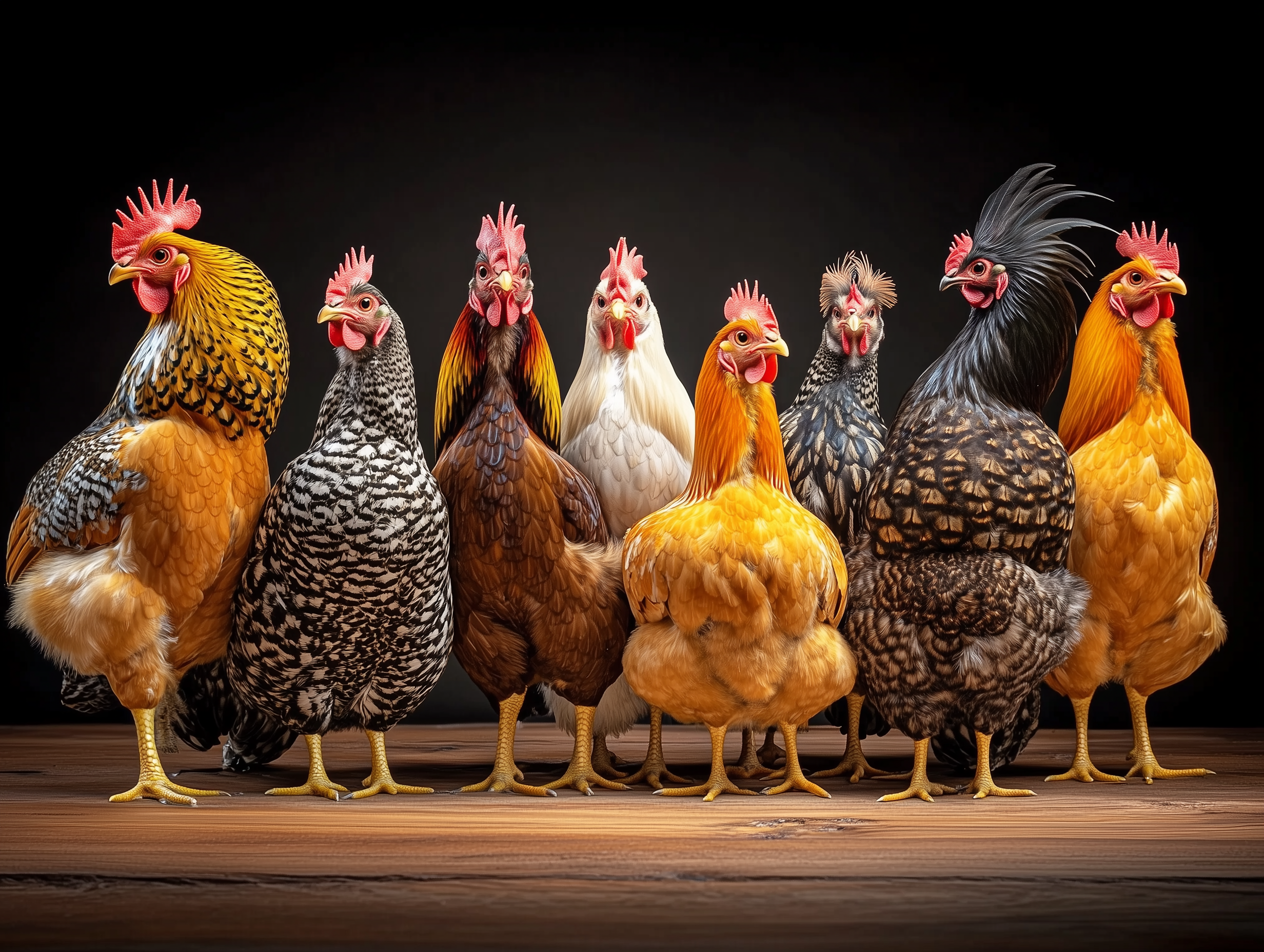
Why Chickens Rule the Roost: A Short History of Backyard Birds and America’s Favorite Protein
🐓 A 9,000-Year Legacy: The Deep History of Chickens
Chickens are believed to have been domesticated around 2000–1500 BCE in Southeast Asia, from the red jungle fowl native to the region. This domestication likely happened in modern-day Thailand, Vietnam, and surrounding areas.
At first, these birds were not prized for meat or eggs. Chickens were ritual animals, used in ceremonies and cockfighting—a practice that spread as far as China, India, and the Middle East by 1000 BCE. The Greeks and Romans, especially, adopted chickens not just for food but for divination— using their pecking patterns to predict the outcomes of battles.
🏛️ Chickens in Europe: From Sacred Symbol to Dinner Table
By the 1st millennium BCE, chickens were widespread in Greece and Rome. Roman poultry farmers bred birds for both meat and egg production. Ancient Roman cookbooks, like Apicius, included dozens of chicken recipes—a sign of their growing culinary appeal. Roman expansion brought chickens to Britain, Gaul (modern France), and Germania, where they became farmyard regulars.
Yet even into the Middle Ages, chickens were mostly a luxury. Eggs were more valuable than meat. Killing a hen meant losing a steady egg supply, so meat was reserved for special occasions or for older, unproductive birds (hence "stewing hens").
By the 16th century, selective breeding in France, Italy, and Holland improved both size and egg-laying capacity. With better genetics and evolving farm techniques, chickens became more accessible to peasants, not just the elite.
🌍 Chickens Cross the Atlantic: Colonial America
Chickens arrived in the Americas in the early 1500s, likely with Spanish and Portuguese explorers. Indigenous peoples in South America may have had limited contact with Polynesian chickens even earlier, but widespread adoption began with European colonization.
By the 1600s, chickens were a staple in New England farmsteads, prized for their ability to thrive in small spaces and on food scraps. They were often free-ranged—allowed to roam farms and forage—and secured in simple coops at night.
What made chickens perfect for colonial life?
-
Low maintenance: They needed little space, food, or water.
-
Egg production: Provided a reliable, renewable protein.
-
Quick reproduction: Hens laid dozens of eggs per year, and chicks could grow to eating size in a few months.
In contrast to cattle or pigs, chickens were affordable for poorer settlers, and crucially, they produced more food for less input.
🐣 Chicken Industrialization in America
Chickens remained a backyard staple until the 20th century. Most families in rural or even semi-urban areas kept a few hens for eggs and meat. The shift to large-scale chicken farming happened in stages:
-
1920s–30s: Chickens were still primarily dual-purpose (eggs and meat). Broilers weren’t yet a thing.
-
1948: The "Chicken of Tomorrow" contest—sponsored by the USDA and A&P grocery stores—helped create the modern broiler industry, producing birds that grew faster, with bigger breasts.
-
1950s–70s: Industrial chicken farms exploded across the U.S., especially in the South. Refrigeration and highway infrastructure allowed national distribution.
-
1990s–present: Chicken became the most consumed meat in the U.S., overtaking beef due to price, health perception, and versatility.
🥇 Chicken vs. Other Proteins
Let’s talk numbers. Based on recent USDA and FAO data:
| Protein | U.S. per capita annual consumption (approx.) | Global % of meat consumption |
|---|---|---|
| Chicken | 100–110 lbs | 35% |
| Beef | 56–60 lbs | 20% |
| Pork | 50–52 lbs | 33% |
| Lamb/Goat | 1–2 lbs | 7% |
| Fish | 16–18 lbs | Variable by region |
Chicken leads because:
-
It’s the cheapest protein to produce.
-
It fits into almost every cuisine: Asian stir-fry, Middle Eastern shawarma, Southern fried, French coq au vin.
-
It's quicker to raise: ready for slaughter in as little as 6–8 weeks (compared to 18+ months for cattle).
-
It's perceived as lean and healthy.
🌿 The Backyard Comeback
As food awareness grows, so does interest in raising your own. Backyard chickens are having a major resurgence, driven by:
-
Grocery prices: A dozen eggs shot up to over $6 in 2022–23, prompting a spike in DIY egg production.
-
Sustainability: Chickens turn scraps into food, fertilize gardens, and eliminate pests.
-
Self-reliance: Pandemic and inflation-era supply chain fears led more people to think like homesteaders.
-
Connection to food: Kids learn where eggs come from, and families feel pride in producing their own.
Backyard chickens are now legal in most U.S. cities, and coop designs range from rustic to luxury. Brands like ours, PoulTree™, support this movement with tools like the PoulTree Rod for better cooking and products that make backyard chicken life easier.
Final Cluck
From Roman battlefields to your Sunday dinner plate, chickens have journeyed a long way—and they’re not going anywhere. They’re economic, efficient, and deeply woven into global food culture. Whether you’re roasting a whole bird on your PoulTree Rod or gathering eggs with your kids at dawn, chickens connect us to something elemental: nourishment, simplicity, and the satisfaction of doing it ourselves.
They’re not just livestock—they’re legacy.


0 comments